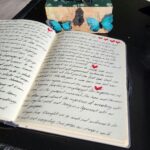We all carry invisible burdens-moments, memories, and feelings that suddenly ignite our deepest frustrations or fears without warning. These hidden sparks, known as triggers, can hold us captive in cycles of anxiety, anger, or sadness, quietly stealing our peace day after day. But what if we could recognize these triggers before they take hold? What if letting go of their power could open the door to a calmer, freer life? In this article, we’ll explore how to identify the subtle signs of your triggers and gently release their grip, unlocking a path toward lasting peace and emotional freedom. Because you deserve to live fully-unshackled, unafraid, and truly at peace.
Understanding Emotional Triggers and Their Hidden Impact
Emotional triggers often lie hidden beneath the surface, quietly influencing our reactions and clouding our peace of mind. These are the moments when a seemingly small comment or event can unleash a flood of intense feelings-anger, sadness, fear-that may feel disproportionate to the situation. Understanding these triggers means peeling back the layers of past experiences, unmet needs, and unresolved pain that silently shape our emotional landscape. When we become aware of what sparks our emotional responses, we gain the power to respond thoughtfully instead of reacting impulsively, opening a pathway to true inner freedom.
Recognizing and addressing triggers requires more than just awareness; it involves compassionate self-reflection and patience. Here are some gentle steps to begin the journey:
- Observe your reactions: Notice what situations or words provoke strong emotions.
- Trace the roots: Connect these reactions to past experiences or unresolved feelings.
- Practice self-compassion: Approach your emotional responses without judgment.
- Create new responses: Develop healthier, conscious ways to manage triggers when they arise.
By valuing these moments as opportunities for growth rather than setbacks, you transform triggers from silent saboteurs into guiding lights on the path toward peace and resilience.
Recognizing the Patterns that Fuel Your Stress and Anxiety
Stress and anxiety often creep in uninvited, yet they rarely appear without reason. They’re the echoes of our internal dialogue, the shadows cast by our unresolved fears and ongoing pressures. Becoming aware of these repetitive cycles is the first act of reclaiming your calm. Pay close attention to situations where your tension spikes-the heated emails, the overwhelming to-do lists, the silent moments before a big decision. Often, these triggers are familiar faces you see daily, manifesting as nagging doubts or racing thoughts.
Identifying these emotional patterns isn’t about blaming yourself; it’s about gaining clarity and acceptance. Look for clues in your body’s response and mental chatter. Are you clenching your jaw during phone calls? Do certain conversations spiral into self-criticism? These subtle signs hint at the moments where anxiety begins to feed. Consider journaling or mindful observation to capture these patterns. Here’s a simple checklist to guide your reflection:
- Notice recurring thoughts that bring discomfort
- Identify people or environments linked to your stress
- Recognize bodily sensations that signal rising tension
- Observe how you respond emotionally to specific events
- Track habits that increase your anxiety, such as avoidance or overthinking
Practical Strategies for Gently Releasing What No Longer Serves You
Begin by nurturing a compassionate awareness of your inner world. Instead of battling difficult emotions or memories, offer yourself grace and patience. Acknowledge the aspects of your life that weigh you down without judgment-this can transform internal resistance into gentle acceptance. Journaling your feelings, meditating with guided prompts, or even speaking aloud to yourself can create space to understand deeply why certain triggers persist. This conscious recognition rewires your emotional landscape, clearing clutter with kindness rather than force.
Next, empower yourself through small, intentional acts of release. Create rituals that resonate with your soul-whether it’s writing down what no longer serves you and safely burning the paper, or visualizing these burdens slipping away like leaves on a stream. Surround yourself with uplifting reminders, such as affirmations or quotes, that reinforce your commitment to growth. Remember, stepping away from toxic patterns is not about perfection; it’s about honoring your journey by choosing freedom over fear. Here are some practical steps to consider:
- Set clear boundaries to protect your emotional energy.
- Practice mindful breathing to ground yourself in overwhelming moments.
- Seek supportive connections who respect and nurture your healing.
- Engage in creative outlets like art or music to express what words can’t convey.
Creating a Lasting Sense of Inner Peace Through Mindful Awareness
Inner peace is not a destination but a journey grounded in awareness. To nurture this tranquility, it’s essential to cultivate a gentle curiosity toward the moments when your emotions spike or your thoughts spiral. Instead of resisting discomfort, try to observe it with compassion, as if you were witnessing a passing cloud rather than a threatening storm. This mindful stance softens the grip of triggers and invites clarity amidst chaos.
Begin by recognizing common signs that signal an emotional trigger – a racing heartbeat, clenched jaw, or a sudden urge to react defensively. Often, these responses are echoes of past experiences rather than the truth of the present. Here are a few ways to embrace awareness and move beyond these reactions:
- Pause and breathe deeply, anchoring yourself in the present moment.
- Label the emotion you’re feeling to create distance from it.
- Reflect gently on the origin of this trigger without judgment.
- Choose a response rooted in understanding rather than automatic reaction.
By consistently weaving these practices into your daily life, you allow space for healing and cultivate an enduring sense of calm that withstands life’s inevitable storms.
To Conclude
Unlocking peace is a deeply personal journey, one that begins with the bravery to face what unsettles us within. By learning to identify our triggers, we shine a compassionate light on the shadows that have silently shaped our reactions. Letting go of these triggers isn’t about erasing pain or pretending challenges don’t exist-it’s about choosing freedom over fear, choosing healing over holding on. As you take these steps, remember to be gentle with yourself. Peace isn’t a destination but a practice, a daily act of kindness toward your mind and heart. In unlocking your triggers, you unlock a life lived with more clarity, calm, and courage-and that’s a gift worth embracing every single day.
















